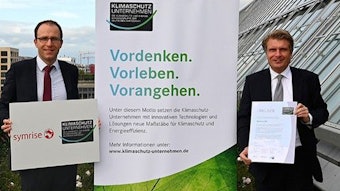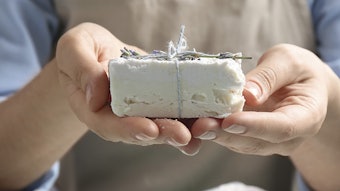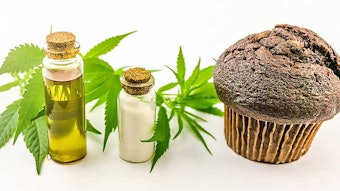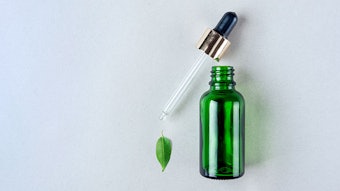
The following article has been published online ahead of the July/August 2020 magazine.
Log in to view the full article
The following article has been published online ahead of the July/August 2020 magazine.
Many consumers desire personal care products that are “natural.” This is a global desire; in most regions, natural claims are important product purchase drivers when combined with product efficacy claims and brand identity.1 This is due in part to the consumer belief that such products are safer for their skin and hair.2
In response, the cosmetics industry offers a variety of products that contain natural, nature-identical, clean, renewable, naturally derived, organic and/or green ingredients; but most of these terms are not well-defined or harmonized in the scientific literature or in government regulations. Yet, consumer preference for these products has not faltered.
In contrast, sustainability is a relatively new driver in the personal care market. While natural and renewable materials are typically components of sustainable products, sustainability tenets comprise many additional factors. One of these is the use of sustainable production processes based on the 12 Principles of Green Chemistry proposed by Anastas and Warner.3 These principles outline processes that minimize energy use, produce low-toxicity products, utilize renewable starting materials and result in products and waste streams that do not persist in the environment.
See related: Green Isn't Enough, Social Progress is the Next Chapter for Naturals
For cosmetic products, indicators have also been proposed to assess the greenness of a chemistry. For example, Philippe et al. suggested the use of an environmental risk assessment as a green indicator.4 Another indicator is the level of renewable carbon in the final ingredient or product.
Green chemistry is an important aspect of the Sustainable Development Goals set by the United Nations (UN) in 2015 as part of its 2030 Agenda for Sustainable Development.5, 6 Here, Goal 12 aims to “ensure sustainable consumption and production patterns,” which includes the green chemistry principles of improved chemical management and reduced waste throughout the product lifecycle, along with reduced release to the environment. The UN agenda also asks businesses to adopt sustainable practices and report sustainability information to their stakeholders.
Consumer product firms could do more than adopt green chemistry, however. Goal 13 encourages “urgent action to combat climate change and its impacts.” Carbon emissions and climate change, in particular, are less frequently considered during the development of cosmetic products. This is partly because the climatic impact of cosmetic ingredients is not known or is known only qualitatively.
In one of the few published studies of the quantitative effect of personal care products on carbon emissions, Francke and Castro used a lifecycle assessment (LCA) to calculate the carbon and water footprint for a soap bar produced and used in Brazil.7 The authors found that one and a half times the weight of the soap bar was emitted as carbon dioxide, even though the bar was based on renewable palm oil, which has a negligible carbon footprint. The soap also generated 3.7 liters of polluted “grey” water per bar.
This water footprint is more often considered than greenhouse gas emissions because it can be calculated more readily and because personal care products have a large water footprint—if factoring in the waste water generated during consumer use.8 Other sustainable development goals, such as improving health and empowering disadvantaged populations, also are important to consider.9
Consumer product firms generally do not communicate quantitative and comparative data on product sustainability, here interpreted as performance against the UN Sustainable Development Goals. In the next section we will discuss various natural certifications for cosmetic products issued by non-governmental organizations (NGOs). However, none of these rate products on sustainability. This makes it nearly impossible for consumers to select products based on how sustainable they are. As a result, sustainability is greatly diminished as a market driver.
Certifiable Standards
To provide transparency for natural cosmetic product claims and harmonize existing natural and organic standards, several industry organizations established standards in the early 2000s. The first was the COSMOS standard,10 followed by the Natural Products Association (NPA) seal11 and the NATRUE standard12 (see Table 1); these are but a few. Most recently, the International Organization for Standardization (ISO) issued the ISO 16128 standard,13 which attempts to unify the various natural standards. Cosmetic products—and, in the case of the NPA seal, cosmetic ingredients—can use the certification seal on packaging and in promotional materials.
The governing organizations provide detailed rules underlying their standards. While the rules are complex, their outline is broadly similar. All eschew petrochemical ingredients and synthetic chemistry other than specific chemical processes such as esterification. Common synthetic ingredients such as ethoxylates also are not permissible.
The COSMOS standard is widely used in Europe, where many products carry the seal. Outside of Europe, only a few brands use the standard, as is the case for the NATRUE standard. In North America, the NPA seal is more recognized, although there are few certified products and even fewer certified cosmetic ingredients. The certification process is involved, and it is not clear if consumers in the United States or elsewhere recognize this certification seal, which reduces the motivation for personal care firms to pursue certification.
Natural cosmetics standards walk a fine line between science and the public’s perception of chemical hazards. They use the precautionary principle and assume that ingredients are not proven safe if evidence for their toxicity is inconclusive. For example, COSMOS and NATRUE prohibit ingredients with genetically modified content, as well as synthetic preservatives that are perceived to be harmful, such as parabens. Although published toxicity studies may be incomplete, some of the prohibited ingredients have been on the market for years without major health effects.
Natural standards for cosmetics could be valuable indicators of how natural a product is—if they were more widely used outside of Europe and if consumers were aware of them. One concern with these standards, however, is they offer information only on the nature of the ingredients and not on the other aspects of sustainability; such as social impact and climate change. A product rating focused on all components of sustainability, using e.g. the calculation methods of Francke and Castro,7 would allow consumers to make an informed decision on what products to buy. It could also motivate brands to offer more sustainable products and ingredients.
A number of certifications address carbon neutrality, i.e., zero overall carbon emissions, although these are not used extensively in the personal care industry. One example is the Carbon Neutral Certification14 issued by the consulting firm Natural Capital Partners, which has been obtained by Burt’s Bees. Here, carbon neutrality is achieved by a combination of emission reductions and carbon offsets, such as reforestation projects. It is arguable whether such projects make a company more sustainable but they are, at the moment, one way a company can achieve carbon neutrality.
The U.S. Department of Agriculture (USDA) launched its BioPreferred Program, whose USDA Certified Biobased Product label is designed to provide information to consumers about the bio-based content of a product. According to Lam-Phaure and Baki,15 this approach allows for an actual percentage to be listed on a label to indicate a verified amount of renewable biological ingredients in that particular product.
Natural cosmetics standards walk a fine line between science and the public’s perception of chemical hazards.
Perhaps the most comprehensive approach to certify sustainability is the EcoVadis program, which helps companies monitor the sustainability performance of their suppliers by giving suppliers a rating. The EcoVadis Corporate Social Responsi¬bility (CSR) rating methodology assesses the quality of a company’s CSR management system through its policies, implementation measures and results. The assessment focuses on the environment, labor practices and human rights, fair business practices and sustainable procurement.16
Natural and Sustainable Ingredients
A wide range of natural ingredients is available to personal care formulation designers. However, the set of chemical structures provided by natural feedstocks is necessarily limited (see Table 2). Natural polymers are generally modified polysaccharides, while natural surfactants are often fatty acids derived from natural oils and modified by hydrophilic glucose or alcohol end groups. Phospholipids and peptides round out the chemical palette.
Naturally derived ingredients are based on natural ingredients with some chemical modifications. For example, the thickener hydroxyethylcellulose is made by ethoxylating cellulose derived from plants. Another example is guar hydroxypropyltrimonium chloride (GHC), which is a conditioning polymer with a natural guar gum base.
As stated, the COSMOS standard has specific rules about what chemical processes can be used for natural ingredients based on the principles of green chemistry. Here, the ethoxylation process used to make hydroxyethylcellulose is not allowed under the standard, while GHC is temporarily allowed for hair care only until better alternatives are available.
Once again, however, personal care ingredients that are natural or naturally derived may not be sustainable.17 Sustainability encompasses the entire lifecycle of a chemical, from feedstock to processing to consumer use and post-use disposal. As an example, palm oil is a common feedstock for cosmetic ingredients but its cultivation and harvesting methods have long been destructive to ecosystems in the regions where oil palms are grown, causing deforestation and community conflict.18
The cosmetic industry has worked successfully on converting palm oil-based products to sustainable palm oil through the Roundtable on Sustainable Palm Oil (RSPO). Most major brands now use 100% or close to 100% RSPO certified palm oil. However, the RSPO certification standards may not be rigorous enough,19 allowing non-sustainable palm oil to be certified. This illustrates how difficult it is to source sustainable natural materials. Other natural materials such as coconut oil have sustainability challenges as well.
Several cosmetic ingredient suppliers have responded with biotechnology-based solutions to meet the demand for sustainable naturals. Some approaches include culturing plant cells or calluses in the lab. These techniques typically require an initial plant sampling but are then replicated in the lab almost limitlessly under controlled conditions. These must then be scaled up to industrial size. Other techniques include fermentation and hydroponically growing natural plants to harvest, renewably, given active entities of interest from the plant.
Apart from their sustainable supply, natural ingredients have other hurdles to overcome. Although innovations have improved in recent years, natural and sustainable materials are still challenged to meet the performance of synthetic materials.20 For example, GHC is regarded as a natural quaternary conditioner but its performance in product formulations may be lacking under some conditions.21 Other commonly used synthetic personal care ingredients have no apparent natural equivalents (see Table 3).
These ingredients provide unique benefits in product formulations that are difficult to replace. Thus, finding natural substitutes for the synthetic materials in Table 3, and improving the performance of the other natural materials in Table 2 could be a potentially powerful new product development strategy for personal care ingredient manufacturers. High performing natural materials may be found in surfactants, emulsifiers and emollients, while performance gaps exist in conditioning agents, thickeners and preservatives.
However, it is not clear that synthetic ingredients will ever be completely replaced in formulations unless consumers compromise on product stability and sensory properties. And, in the competitive cosmetics marketplace, consumers have little incentive to compromise on those key product parameters. But the environmental impact of these synthetic ingredients could be minimized by manufacturing them according to the green chemistry principles and UN Sustainable Development Goals. And this could make synthetic ingredients more acceptable to sustainability-conscious consumers.
Progress has been made with surfactants, emulsifiers and preservatives, where promising natural alternatives have been developed in industry and academia. Biosurfactants, for example, can be based on amino acids, which could serve as alternatives to quaternary ammonium surfactants.22 Another route is producing polyol lipids by fungi.23 The challenge, however, is manufacturing these innovative materials at scale and at acceptable cost. Also, new natural formulas will need to be redesigned around the unique properties of these new materials.
‘Clean’ Formulations
Browsing the aisles at personal care and beauty retailers gives the impression that many products are natural, in some form. A more recent iteration has focused on “pure” formulas with not just natural ingredients, but also those that are ethically sourced and sold in sustainable packaging. This trend has become known as “clean” beauty, which is loosely defined, encompasses various claims and also is not regulated, save for rules set by retailers.
Sephora, for example, has interpreted “clean” beauty to mean products formulated without some 50 chemicals identified on its excluded ingredients list. Many of these, such as parabens, retinyl palmitate and phthalates, appear on other lists as well, including the COSMOS standard. The same is true for the more than 100 ingredients that Whole Foods Market has prohibited in its personal care products. Neither the Sephora list nor the Whole Foods Market list is as extensive as the COSMOS standard, as they allow products to contain several of the ingredients in Table 3, such as dimethicone.
Reviewing the ingredient labels of products with natural or clean claims confirms they often contain synthetic chemicals. Dimethicone and its derivatives are common, as are acrylic polymers, taurate copolymers, EDTA, cetrimonium chloride and methylisothiazolinone. Some brands are completely free of these synthetic materials; Burt’s Bees, Tom’s of Maine and Herbivore offer examples. Therefore, it is possible to formulate natural products without synthetics whose aesthetics and performance are acceptable to at least some consumers.
If the market for sustainable products is to grow ... a universally recognized global certification for sustainability is
clearly needed.
As noted, since several important ingredients in personal care products do not have natural or sustainable equivalents, brands will use synthetic materials to design the product sensory properties consumers desire. The clean beauty trend illustrates that cosmetics users are increasingly interested in sustainable products. New natural and sustainable materials that fill some of the gaps described should find a ready market.
Conclusions and Recommendations
There remains a growing global market demand for natural and sustainable personal care products. However, definitions for what is “natural” vary, and there is no set standard as to what constitutes sustainable—not to mention it is difficult if not impossible to measure.
Sustainability encompasses criteria other than renewable and biodegradable materials. For example, one measure would consider the total lifecycle of personal care products, which would require sustainability information (material feedstocks, production and manufacturing conditions, carbon and water footprint, etc.) to pass along the value chain to the certifying organization. The infrastructure for that purpose does not currently exist.
If the market for sustainable products is to grow, consumers must be able to select products based on their measured environmental impact. As such, a universally recognized global certification for sustainability is clearly needed. Such a certification would need to complement existing natural product certifications and be clearly communicated to cosmetic consumers so they know what to look for and understand what the certification means; it is not clear what organization would issue and monitor this global sustainability certification.
The target for the UN Sustainable Development Goals is 2030, which is just a decade away. It will take at least that much time to develop new sustainable ingredient chemistries. The good news is cosmetic ingredient manufacturers have made great strides toward sustainability. Many natural ingredients are now produced in a more sustainable way—examples include palm, argan and coconut oils. A renewed and increased effort will be needed, however, to phase out non-sustainable materials, develop new sustainable ingredients, and improve the performance of existing green chemicals so that they can substitute all currently irreplaceable personal care ingredients.










